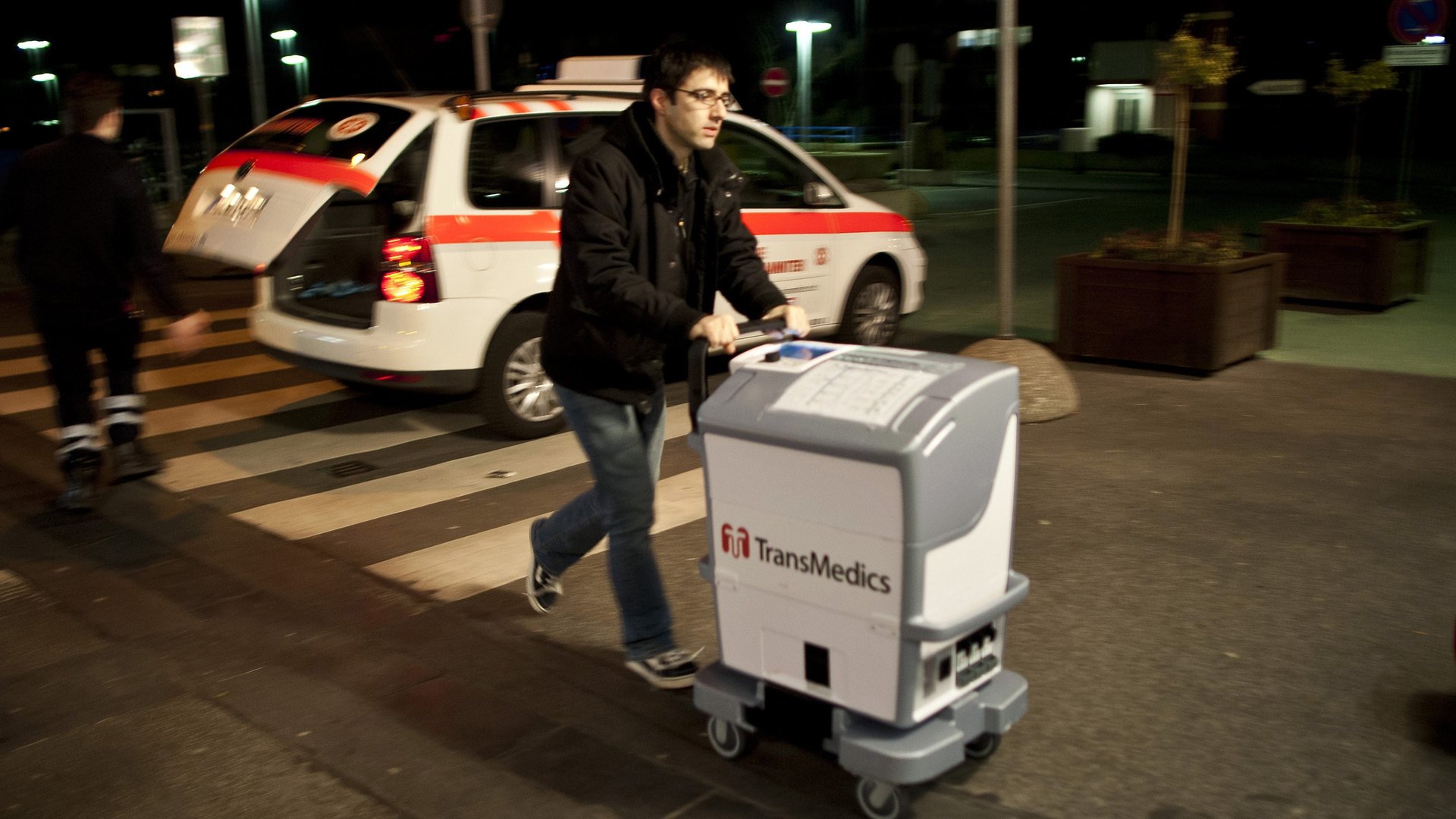Demand for Covid-19 lung transplants is about to shoot up
In March, when the Covid-19 pandemic got its start in the US, transplant surgeons were at a loss. They could see the havoc the virus wreaked on lungs in the most severe cases: The rapid inflammation and subsequent scarring destroyed the organs, meaning a patient’s only option was a lung transplant. But surgeons had no idea if transplants would be a safe option.


In March, when the Covid-19 pandemic got its start in the US, transplant surgeons were at a loss. They could see the havoc the virus wreaked on lungs in the most severe cases: The rapid inflammation and subsequent scarring destroyed the organs, meaning a patient’s only option was a lung transplant. But surgeons had no idea if transplants would be a safe option.
First, there was the risk of undergoing a major surgery surrounded by Covid-19 patients. For a double lung transplant, patients “will stay about three weeks in hospital if everything goes well,” says Ankit Bharat, chief of thoracic surgery at Northwestern Medicine. That’s a long exposure window—especially considering organ recipients stay on a cocktail of immunosuppressants. Plus, doctors didn’t know whether a transplant would be a long-term fix. What if the virus lingered in the body, and simply infected the new lungs?
Surgeons couldn’t take those risks—especially because organs are such a precious commodity. Even if doctors wanted to try a lung transplant on a Covid-19 patient, organ donation came to a screeching halt at the beginning of the US pandemic, and transplant rates plummeted across the board. ”Most centers either shut down or really slowed down,” Bharat says. “It was terrible.”
By June, surgeons had a better understanding of the virus. They knew that, with proper ventilation, there were ways to make sure that Covid-19 didn’t make it out of designated areas. They also knew the infection’s trajectory: Once the virus was no longer replicating in a patient, the transplanted lungs would be safe.
So early that month, Bharat and his team performed one of the first double-lung transplants for a young woman with a severe coronavirus case. Since then, there have been at least six more in the US and six in China, along with several single-lung transplants.
“Now that more patient data has come out, we have a fairly good idea of how we can possibly approach this,” says Sadia Shah, a critical care pulmonologist at the Mayo Clinic in Jacksonville, Florida. After a handful of successes, doctors are beginning to compile criteria to consider when a Covid-19 patient needs a lung transplant, and to optimize the chance of recovery after the surgery.
“We’re just seeing the top of the iceberg right now,” says Shah. As cases of Covid-19 begin to pick up again across the US, it’s unclear whether there will be enough donor lungs for the Covid-19 patients who need them.
A study in supply
Organs are always in short supply. At the moment, there are over 1,000 patients on the lung transplant waitlist, and about 300 of them will die before they receive an organ.
Only 15% of potential donor lungs actually make it into recipients—in part because lungs are so often damaged. “Lungs most commonly come from donors who sustain some kind of injury that has induced brain death,” Bharat explains—a gunshot wound to the head, a stroke, or a drug overdose. In all of these scenarios, people frequently vomit and aspirate, bringing fluid into the lungs. Lungs can also be damaged while doctors try to save patients with CPR or intubation.
Those limitations were exacerbated at the beginning of the pandemic. Lung waitlist mortality in the US jumped from 10 deaths per 100,000 person-years in the month before the pandemic to 17 once it started, as organ procurement organizations established processes to quickly test donors for active Covid-19 infections. “We had to pause for a little bit to make sure there were proper guidelines in place,” says Shah.
Now, donations are roughly back to normal levels. And luckily, there are ways that pulmonologists can try to increase the number of eligible lungs. During the pandemic, many transplant surgeons are considering expanding the criteria for lung donation, Bharat explains. In some cases, it may be appropriate to take donors who have smoked (although not heavily), or are as old as 65. Before, the cutoff age was 55, and smokers weren’t considered at all.
Today, it’s also possible to accept lung donations from people who were living with hepatitis C, which was also considered too risky before last year. And more transplant centers are equipping themselves with machines necessary to perform ex vivo lung perfusion, or EVLP. These machines essentially act as incubators for donated lungs, giving them time to heal from an infection before they get transplanted into a new recipient.
Even with these measures, though, lungs are still likely to be in short supply, based on historical waitlist trends. That’s why it’s critical to become an organ donor if you can. “If we used all the organs from all donors, we probably wouldn’t have an organ shortage throughout the country,” says Bharat.